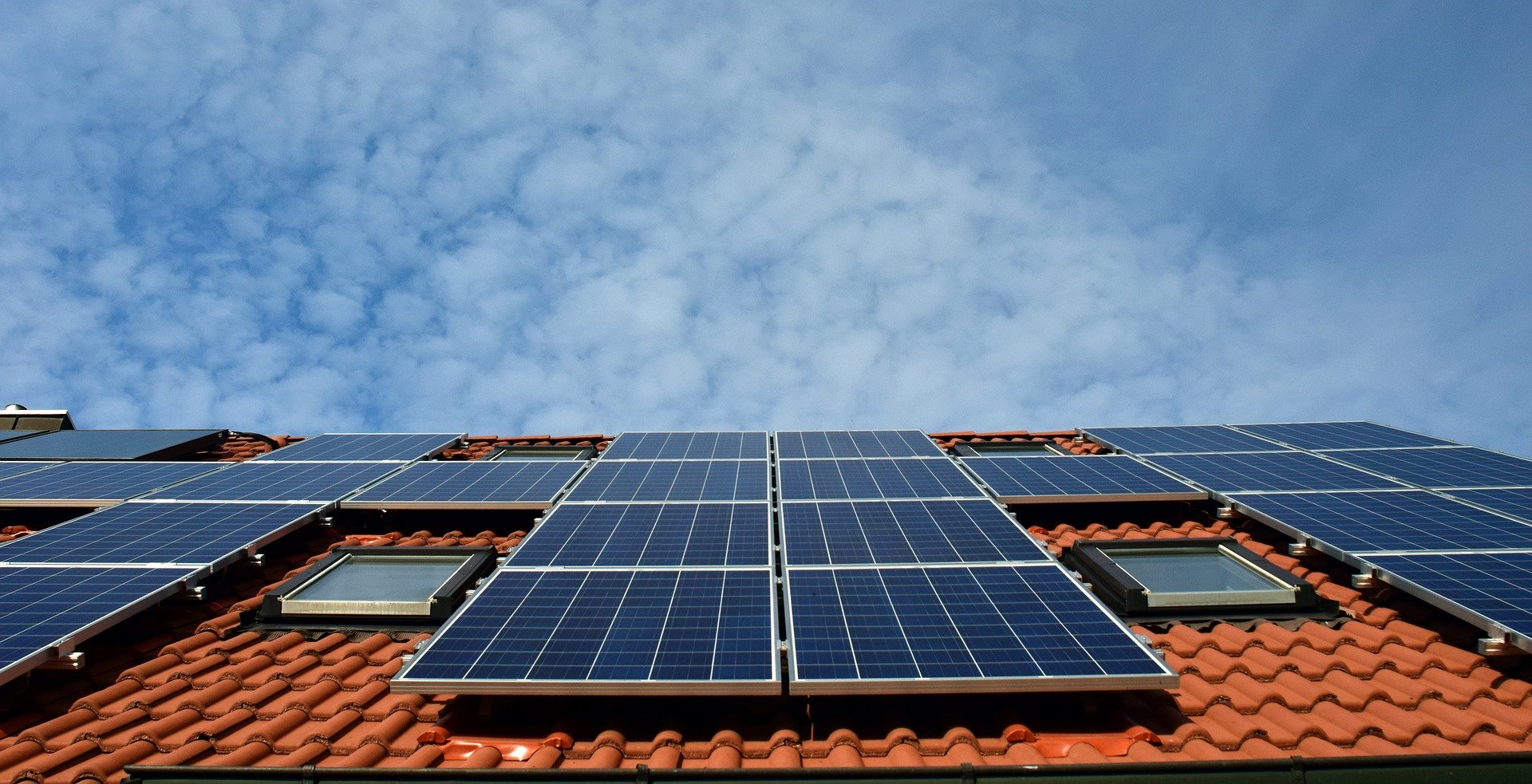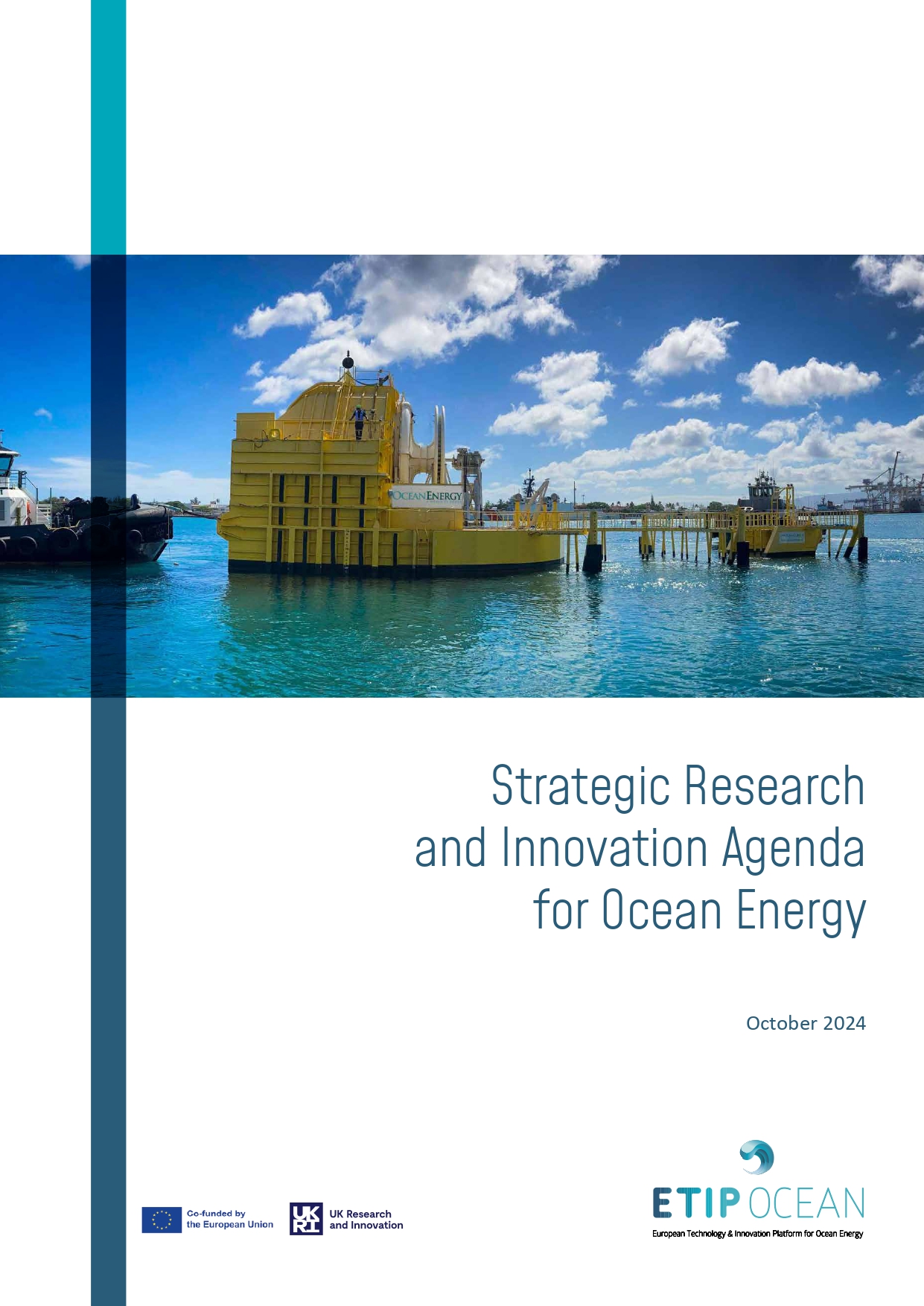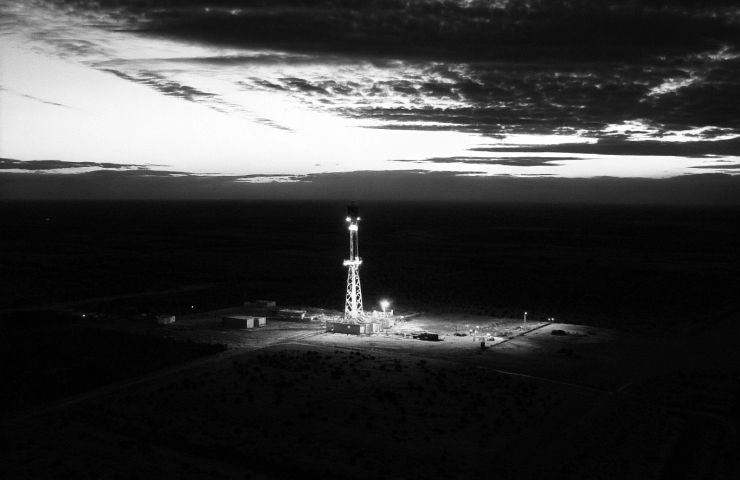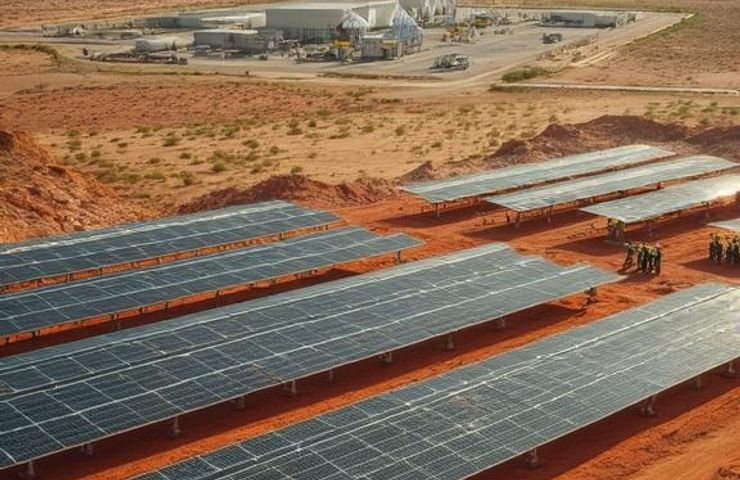High-pressure systems boost global solar irradiance in early 2025
In a new weekly update for pv magazine, Solcast, a DNV company, reports that the first half of 2025 has delivered favourable solar conditions across several key solar generation regions around the globe, with many population centres experiencing above-average irradiance.

In a new weekly update for pv magazine, Solcast, a DNV company, reports that the first half of 2025 has delivered favourable solar conditions across several key solar generation regions around the globe, with many population centres experiencing above-average irradiance.
The first half of 2025 has delivered favourable solar conditions across several key solar generation regions around the globe, with many population centres experiencing above-average irradiance. Notable exceptions include India, Southeast Asia, and high northern latitudes, where cloudier conditions prevailed. These patterns have been influenced by persistent high-pressure systems and a weak to neutral La Niña phase, according to analysis using the Solcast API.

In Europe, a dominant high-pressure blocking pattern over central and western regions led to irradiance levels 5–15% above historical averages.

The United Kingdom stood out with irradiance approximately 15% above norms, marking its sunniest start to the year on record. This surge occurred despite a mid-February period of exceptionally low irradiance.

Conversely, the Nordics and Baltics experienced significant declines in solar availability, and the Iberian Peninsula saw conditions at or below average, with increased cloud cover and precipitation.
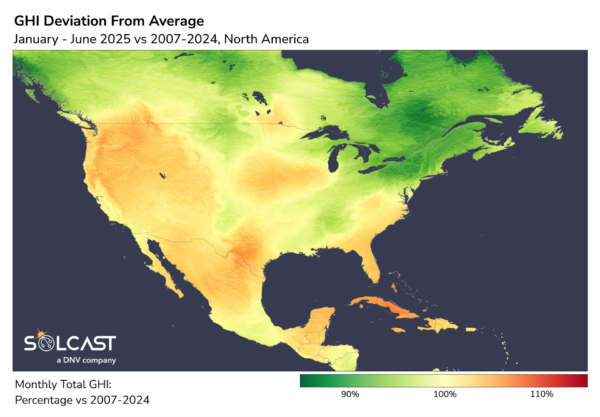
North America's solar performance was mixed. The western United States, particularly areas west of the Rockies, benefited from a series of high-pressure systems, resulting in about 5% more irradiance than typical coming from a strong start in January and despite a weak February and March. Mexico experienced similar gains.

However, the Midwest, South, and Northeast faced generally cloudier conditions, with exceptions in parts of Texas and Florida, in part due to a sunny March. Canada, influenced by La Niña-driven storm tracks, and with some impact from aerosols due to wildfires, saw irradiance nearly 10% below average in the first two quarters.

China saw a material positive anomaly, especially in its eastern regions, which experienced the strongest start to the year globally. January irradiance was up to 60% above normal, tapering to 30% above by April.

This was attributed to a mild La Niña onset, subdued trade winds, and reduced aerosol concentrations. In contrast, other parts of Asia, including India and Southeast Asia, contended with cloudier-than-normal conditions.

South America and Australia largely mirrored global trends, with higher-than-usual irradiance in the year's first half. These patterns occurred despite the year commencing under weak La Niña conditions, which is associated with wetter weather for Australia and northern South America.

Exceptions were noted in parts of Chile, Bolivia, and Argentina, as well as in Australia's northern and eastern coastal fringes where persistent moisture from the Coral Sea played a role.
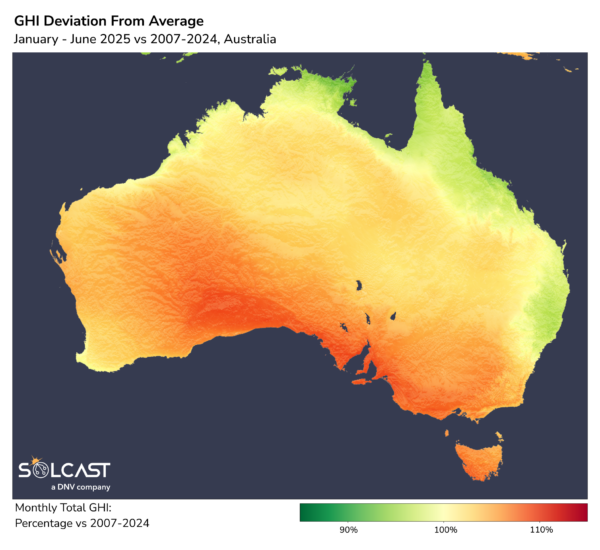
Solcast produces these figures by tracking clouds and aerosols at 1-2km resolution globally, using satellite data and proprietary AI/ML algorithms. This data is used to drive irradiance models, enabling Solcast to calculate irradiance at high resolution, with typical bias of less than 2%, and also cloud-tracking forecasts. This data is used by more than 300 companies managing over 150GW of solar assets globally.
What's Your Reaction?









